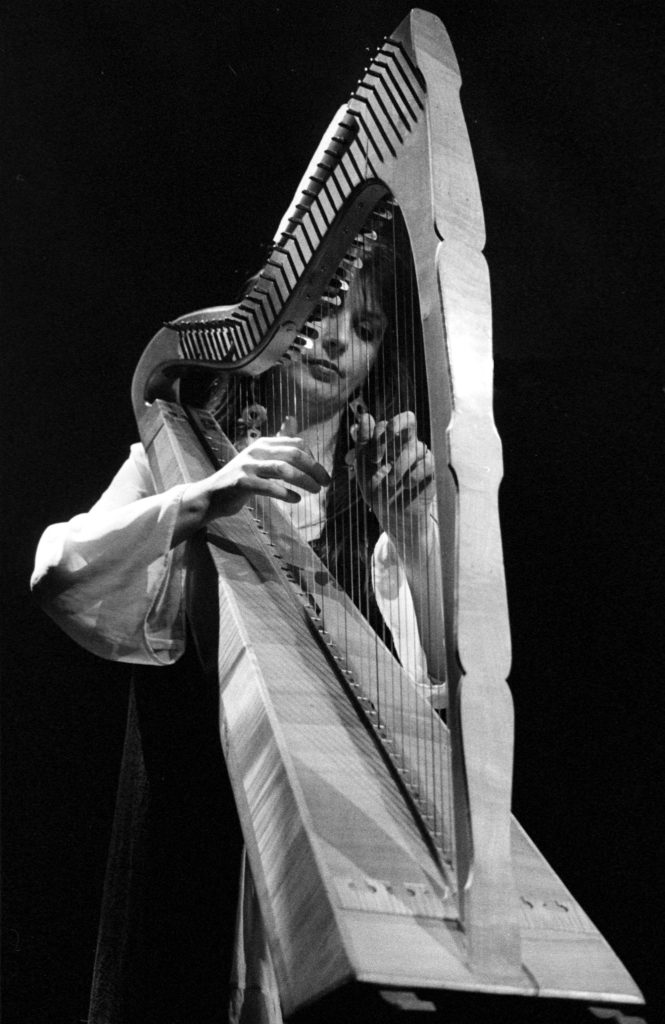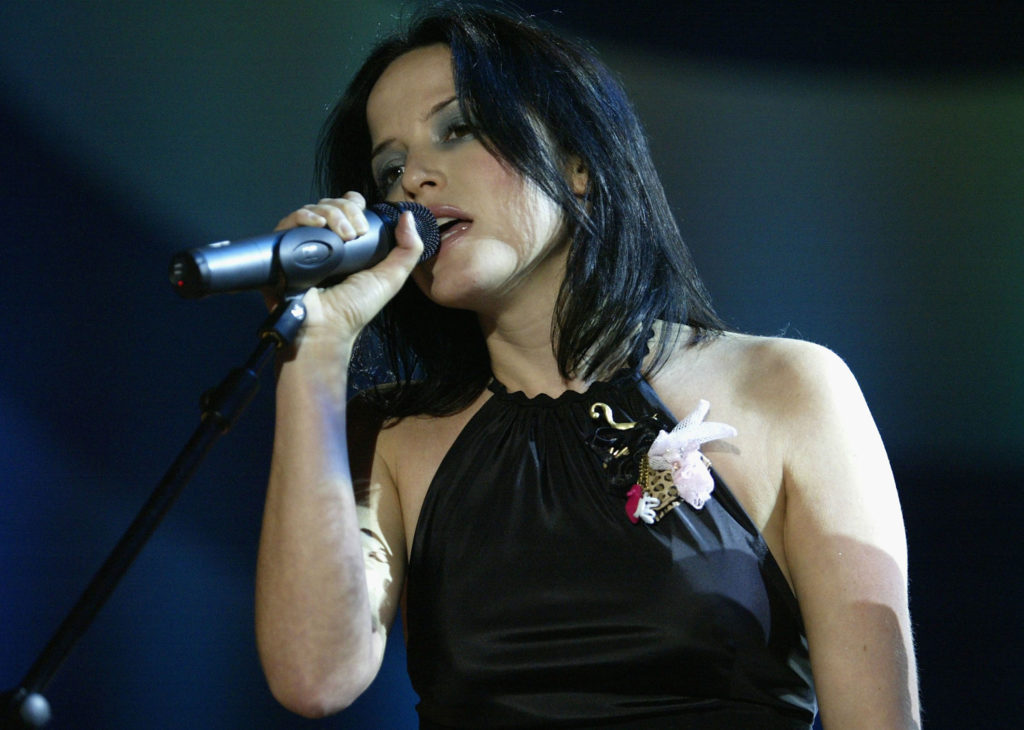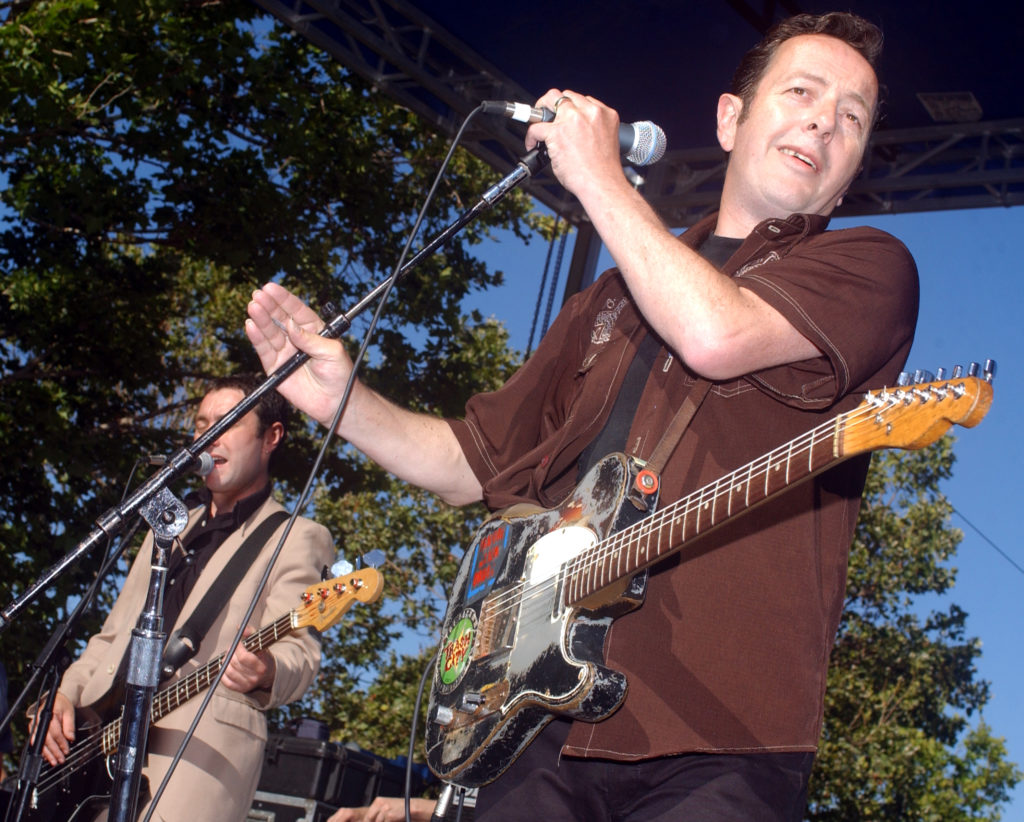THE history of folk rock and Celtic rock in Ireland is deeply interwoven with the country’s cultural and social fabric.
In effect, traditional music was given a new pair of legs when Celtic rock arrived on the scene.
Now, with the release of a new acoustic album from Thin Lizzy — sadly without the presence of Phil Lynott — it seems an ideal time to tease out what happened in the aftermath of the Clancys, The Dubliners and The Chieftains, with an overview of what developed musically in Ireland and why.
In the field of folk rock, England has its Steeleye Span and Fairport Convention, Scotland has The Waterboys, Runrig and Five Hand Reel, and Brittany the redoubtable Alan Stivell. The USA’s bands include Flogging Molly and the Dropkick Murphys, while Australia had the superb Bushwhackers Band in the 1970s and 1980s. Today, even Serbia can boast a very fine Celtic rock band in the shape of The Orthodox Celts.
But Ireland, over the last fifty years or so, has produced arguably the highest profile bands of them all.
Emerging in the 1970s, Celtic rock blended traditional Irish music with rock influences, creating a new sound that resonated with the rapidly changing society of the time. Pioneering bands like Thin Lizzy and Horslips played a pivotal role in shaping the genre, influencing not only the Irish music scene but also inspiring musicians globally.
The architects of Celtic Rock
HORSLIPS, formed in 1970, are often credited as the forefathers of Celtic rock. The band’s members sought to integrate Irish mythology and history into a rock framework, creating something entirely new. Their debut album, Happy to Meet – Sorry to Part (1972), showcased their innovative approach, blending traditional jigs and reels with electric instruments, modern arrangements and self-penned compositions.
The band reached their creative peak with the concept album The Táin (1973), based on the Irish mythological epic of the same name. The album’s blend of haunting melodies and rock anthems captured the imagination of Irish audiences and solidified their place in the country's musical history. Horslips became the quintessential Celtic rock band, inspiring countless others to explore this hybrid genre.
Thin Lizzy, led by charismatic frontman Phil Lynott, brought a distinctly Irish flavour to mainstream rock. Formed in Dublin in 1969, Thin Lizzy initially drew upon blues and hard rock but later incorporated elements of folk and Celtic music that set them apart from their contemporaries.
Lynott’s poetic lyrics often reflected his Irish heritage and personal experiences growing up in Dublin, and resonating deeply with audiences.
But it was Whiskey in the Jar, a reimagining of a traditional Irish ballad, that earned them the title of Celtic rock pioneers. Although not explicitly a Celtic rock band, Thin Lizzy’s music carried the essence of Ireland, bridging traditional and modern sounds.
Today, Celtic rock and folk rock remain vital parts of Ireland’s musical identity.
By fusing ancient traditions with modern sensibilities, Irish folk rock and Celtic rock created a sound that is uniquely Irish and universally resonant—a testament to Ireland’s enduring influence on the global music stage.
The top ten Irish Celtic rock tracks
- Whiskey in the Jar – Thin Lizzy
A traditional Irish ballad transformed into a rock anthem, Thin Lizzy’s rendition is arguably one of the most famous Celtic rock tracks, charting internationally in 1972. Phil Lynott’s soulful vocals and the band’s dual-guitar harmonies with one of the most memorable introductory riffs in rock music made this a classic.
Thin Lizzy reprised the genre in The Black Rose, with lines that include:
My Roisin Dubh is my one and only true love
It was a joy, that Joyce brought to me
While William Butler waits
And Oscar, he's going wild
The song later mentions The Mountains of Mourne ‘come down to the sea’, in a nod to the great Percy French.
 Singer, songwriter and bassist Phil Lynott of the hard rock band Thin Lizzy
Singer, songwriter and bassist Phil Lynott of the hard rock band Thin Lizzy- Dearg Doom – Horslips
Taken from their seminal album The Táin, Dearg Doom is a standout track that could fairly be said to epitomise Celtic rock. With its hypnotic riff inspired by traditional Irish jigs and its mythical themes, this song is a cornerstone of the genre.
- In a Lifetime – Clannad (featuring Bono)
Clannad’s ethereal fusion of Irish folk and rock is on full display in this collaboration with U2’s Bono. The song’s haunting melody and lush instrumentation make it a timeless classic in the Celtic rock canon.
 Irish singer Maire Brennan of Clannad
Irish singer Maire Brennan of Clannad- The Irish Rover – The Pogues & The Dubliners
The English National Opera (ENO) have issued a trigger warning for their current production of The Pirates of Penzance. It says that the production includes: “mild violence and references to alcohol misuse”. The violence is one of the pirates waving an obsolete pistol around, and the ‘alcohol abuse’ the drinking of sherry.
What the ENO would have made of The Irish Rover, we can’t be sure, but any warning would have had to contain information about mass drownings (only one survivor), severe alcohol dependency (seven million barrels of porter) pugnacious Englishmen (fighting Bill Treacy from Dover) and fast fashion (one million bags of the best Sligo rags).
The definitive version of the song, of course, was not recorded by the ENO, but by The Pogues in collaboration with The Dubliners.
The Pogues had already changed the face of Irish music by combining the momentum of punk with the melodicism of traditional music, and celebrating the Irish diaspora in a way never done before.
This spirited cooperation between The Pogues and The Dubliners turned the old song into a famous Celtic rock track.
- Runaway – The Corrs
Runaway, the debut single by Irish band The Corrs, was released in 1995 from their album Forgiven, Not Forgotten.
Blending Celtic influences with decidedly pop influences, the track could arguably be called folk-pop. But the use of traditional instruments (tin whistle, fiddle) and a solid rock base, make this undoubtedly a Celtic rock track.
 Singer Andrea Corr of The Corrs
Singer Andrea Corr of The Corrs- Summer in Dublin - by Bagatelle
Summer in Dublin by Bagatelle is possibly the quintessential Celtic rock song. It was written about Dublin, but in a style — and in a manner — that would not go amiss on a U2 album, or for that matter on any stadium rock band’s set list.
It was written by Dundalk man Liam Reilly who also penned one of the best, and most poignant, songs about immigration, The Streets of New York. But that would probably classified as straightforward folk ballad, whereas Summer In Dublin is as good a Celtic rock track as you might find
- The Minstrel Boy – by Thomas Moore
Sung by Joe Strummer (singer with The Clash, and latterly The Pogues) this version in the film Black Hawk Down is one of the stands as one of the great Celtic rock moments in cinematic history. The haunting Irish lament by Thomas Moore is transformed under Strummer’s raspy delivery, into a transcendent elegy. The contrapuntal harmony adds to the song’s poignancy and power.
 Joe Strummer in action
Joe Strummer in action- Jig-a-Jig by East of Edin
Jig -a-Jig was a British Top 10 hit single, released in May 1970 by the progressive rock band, East of Eden. It peaked at No. 7 in the UK Singles Chart in early 1971. The track was a complete outrider for the band — they were a progressive rock band originally formed in Bristol. But Limerick fiddle player Joe O’Donnell brought Irish traditional music into the mix.
The piece is actually a set of three traditional reels, not jigs, namely The Ashplant Reel, Drowsy Maggie and Jenny's Chickens. The set of reels has now entered the folk canon and can often be heard in this combination at seisúns and gigs.
- The Hills of Greenmore
Gay and Terry Woods’ rendition of the old Armagh song The Hills of Greenmore on Steeleye Span's debut album, Hark! The Village Wait, is breathtaking. From Dublin, the Woods siblings were influential in shaping Steeleye’s early sound, blending Irish and English folk traditions. The duo left shortly after the first album was released, with Terry later joining the Pogues, and Gay Woods rejoining Steeleye some years later.
10.King of the Fairies – Horslips
Another Horslips masterpiece, this instrumental track demonstrates their ability to fuse traditional Irish dance tunes with electrifying rock arrangements. It’s a staple in the Celtic rock repertoire.

